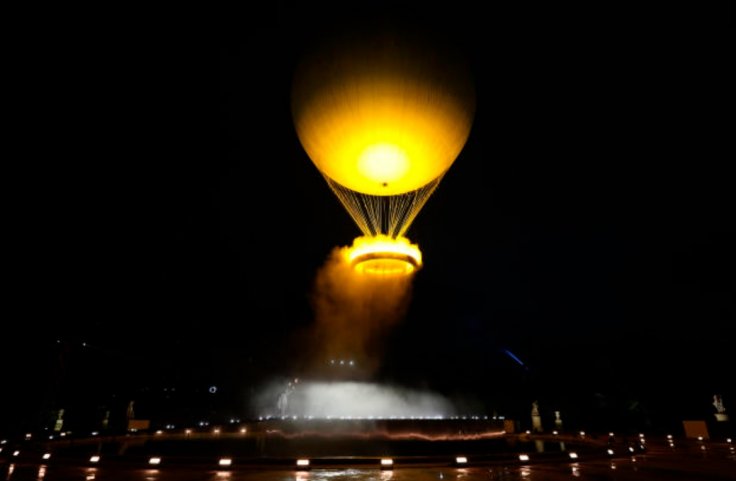Organizers revealed that the Olympic flame, which wowed the world during the Paris 2024 opening ceremony in a floating cauldron, is actually 100 percent electric. The 'fake' flame is produced using 40 LED lights and water mist, making it safe to touch.
Paris had aimed to host the 'greenest Olympic Games ever,' moving away from the traditional cauldron flame, which typically relies on fossil fuels. Tony Estanguet, head of the Paris 2024 organizing committee, said: "We wanted the cauldron to use a new technology in order to not produce too many emissions. We were ambitious and we wanted to bring together something spectacular and environmental responsibility at the same time."
Not Real but LED

French Olympic gold medalists Marie-José Pérec and Teddy Riner wowed the crowd at the opening ceremony on Friday night by performing the traditional task of transferring the torch-based flame to the Olympic cauldron. In a breathtaking display, a ring of fire then propelled a hot air balloon to ascend into the night sky above Paris.
This move paid homage to the Montgolfier brothers, the French innovators of the hot air balloon.

Their initial designs took flight in 1783 at the same site as the Olympic flame for Paris 2024.
The 'fake' flame will remain lit throughout the Olympic Games, with the balloon stationed at the Tuileries Garden during the day. At night, the balloon will ascend once more and hover around 30 meters above the French capital.
French designer Mathieu Lehanneur created the new type of hot air balloon that carries a ring of fire. He said: "This absolutely unique Cauldron represents all the spirit I wanted to give to the Olympic and Paralympic objects.

"Light, magical and unifying, it will be a beacon in the night and a sun within reach during the day.
"The fire that burns in it will be made of light and water, like a cool oasis in the heart of summer."
Innovative Idea
The decision to use a 'fake flame' in the cauldron follows the traditional lighting of the torch for the Paris 2024 Olympic Games in ancient Olympia. Several months before each Olympics, the flame is ignited at the site of the ancient Games in Greece using sunlight and a parabolic mirror.

This year, Greek actress Mary Mina, acting as the high priestess, used a backup flame to light the torch due to overcast skies during the relay's start in Greece and France.
The flame is carried by torches in a relay until it reaches the location of the opening ceremony, where it is used to ignite the cauldron.
The cauldron will remain lit throughout the Games and will be extinguished at the closing ceremony.
Paris 2024 organizers have defended the use of the 'fake' flame, emphasizing that its purpose is mainly symbolic.








